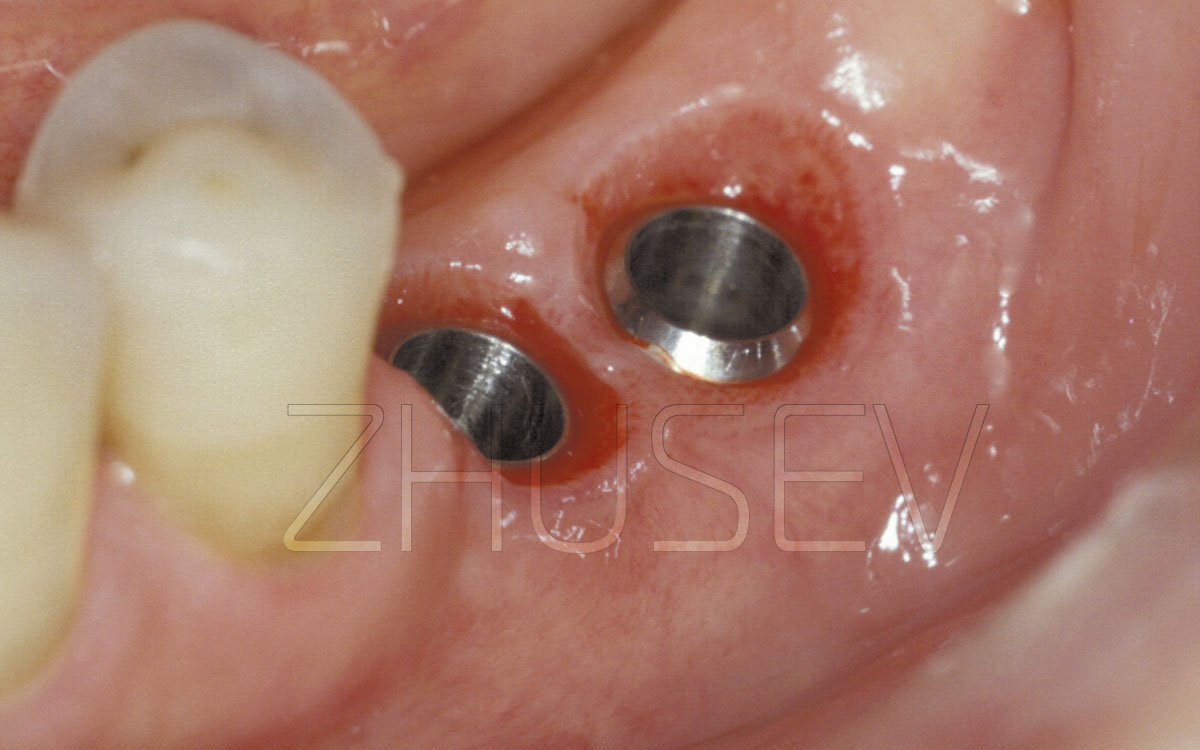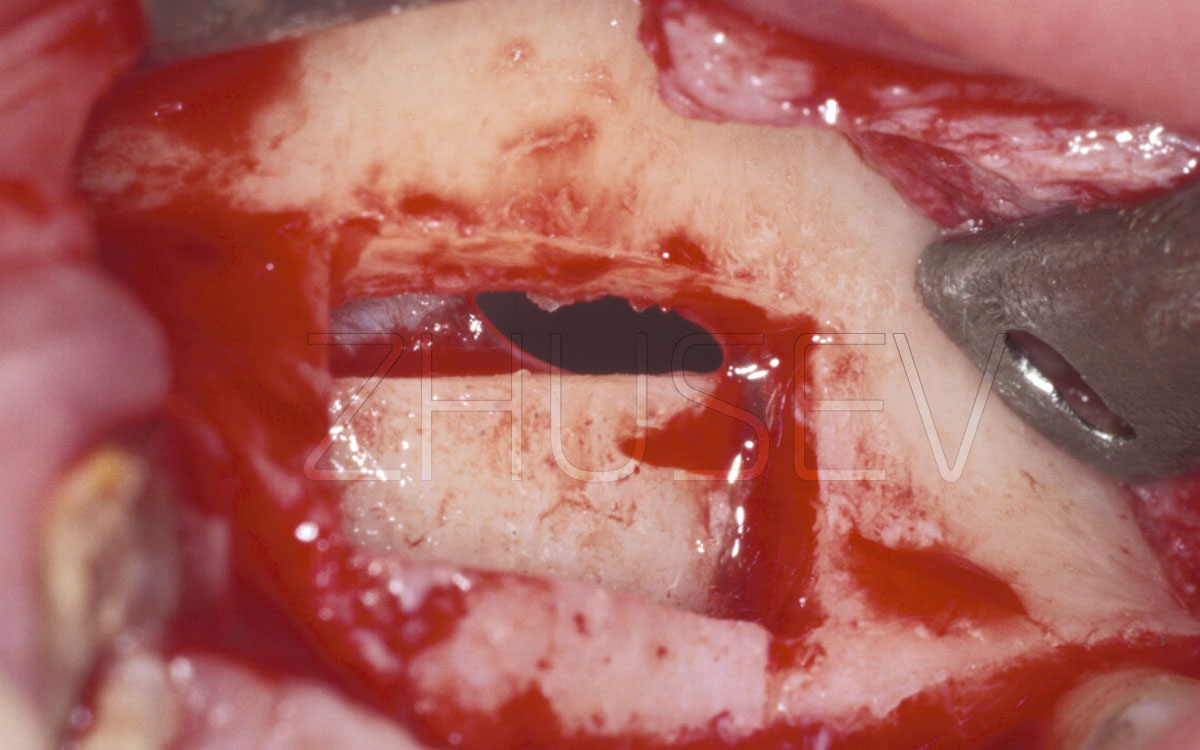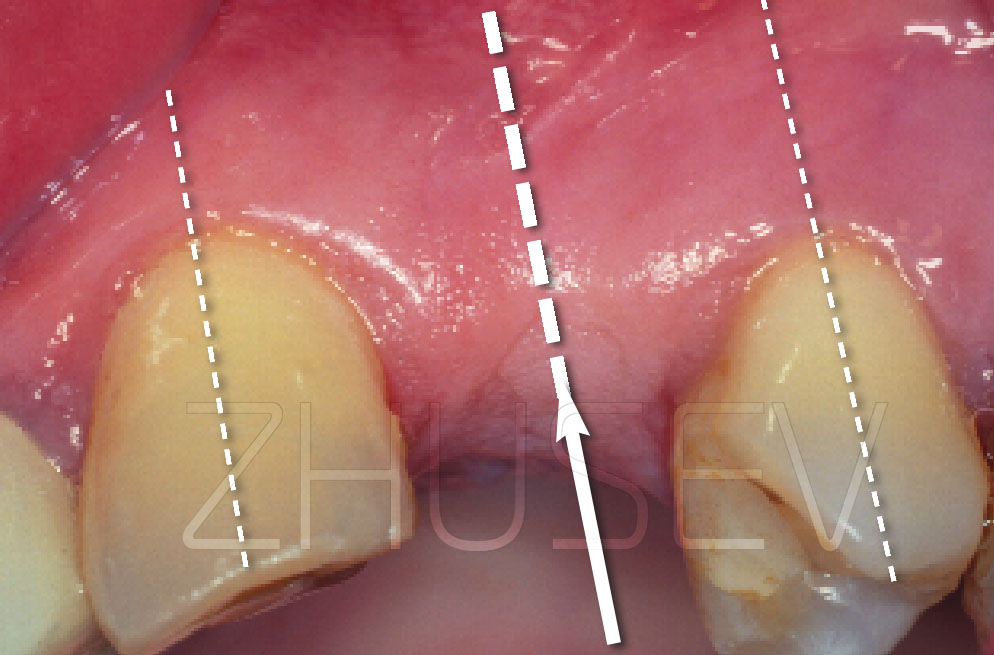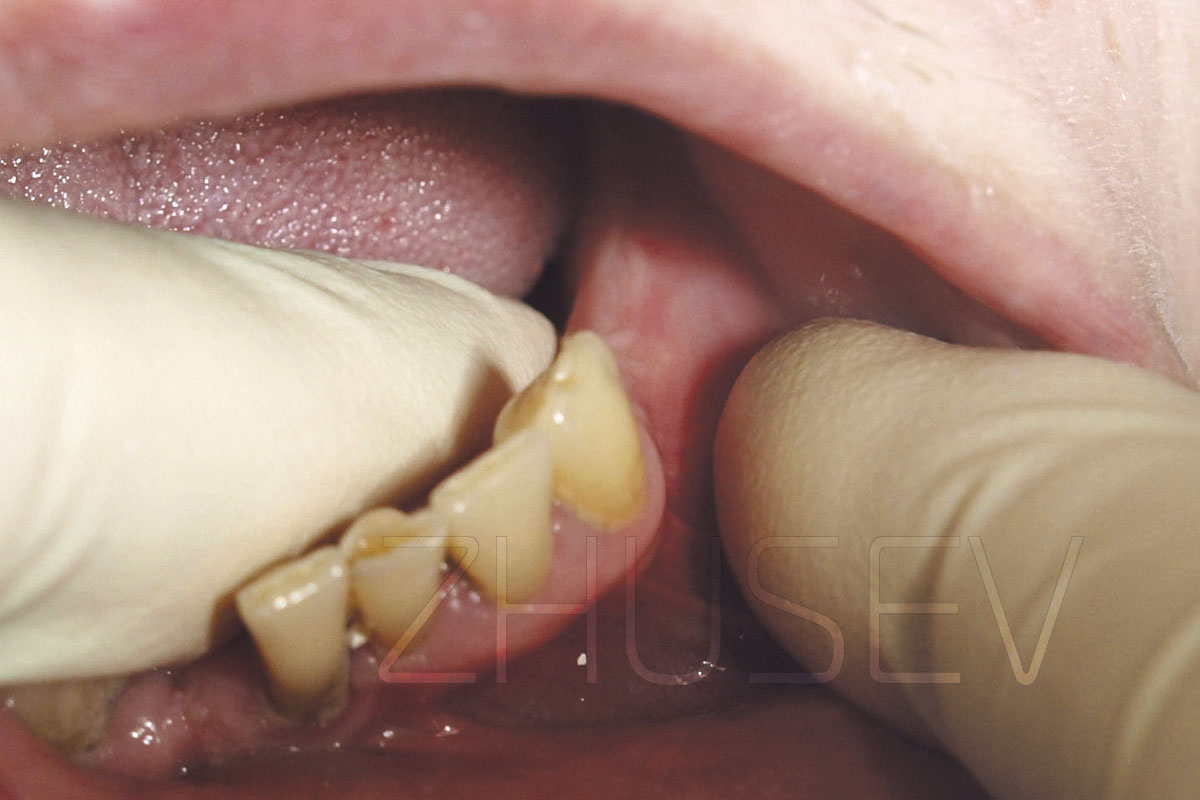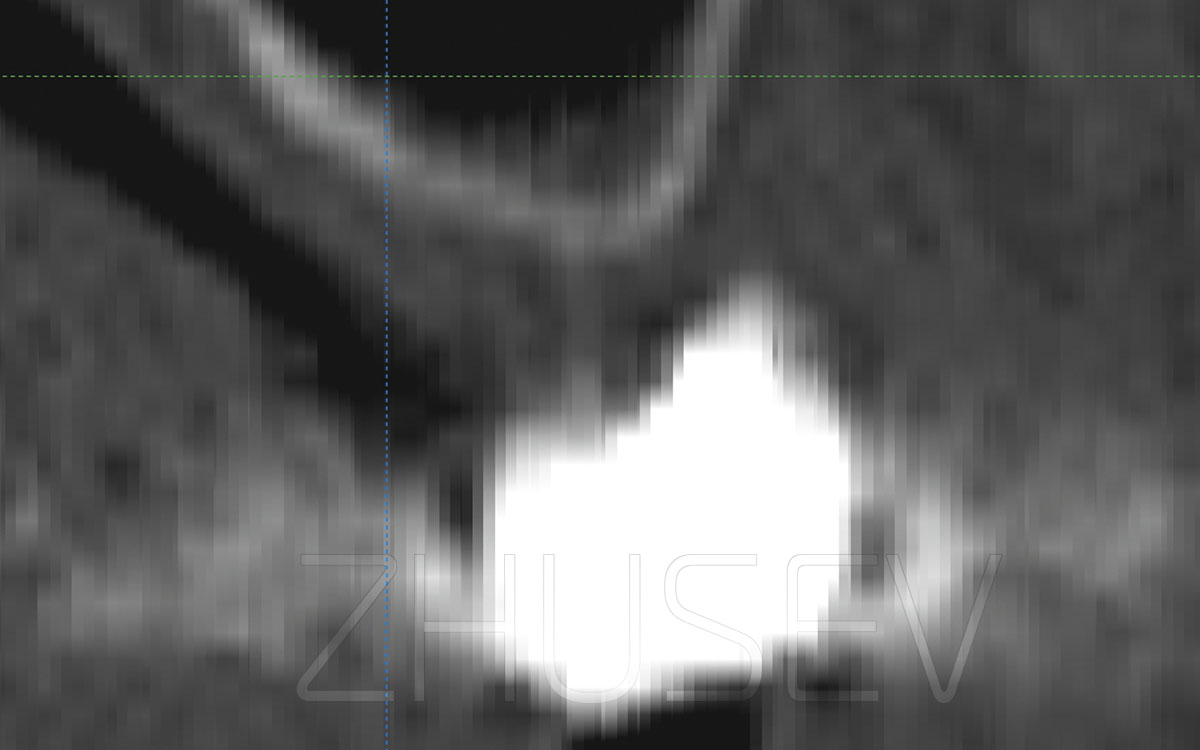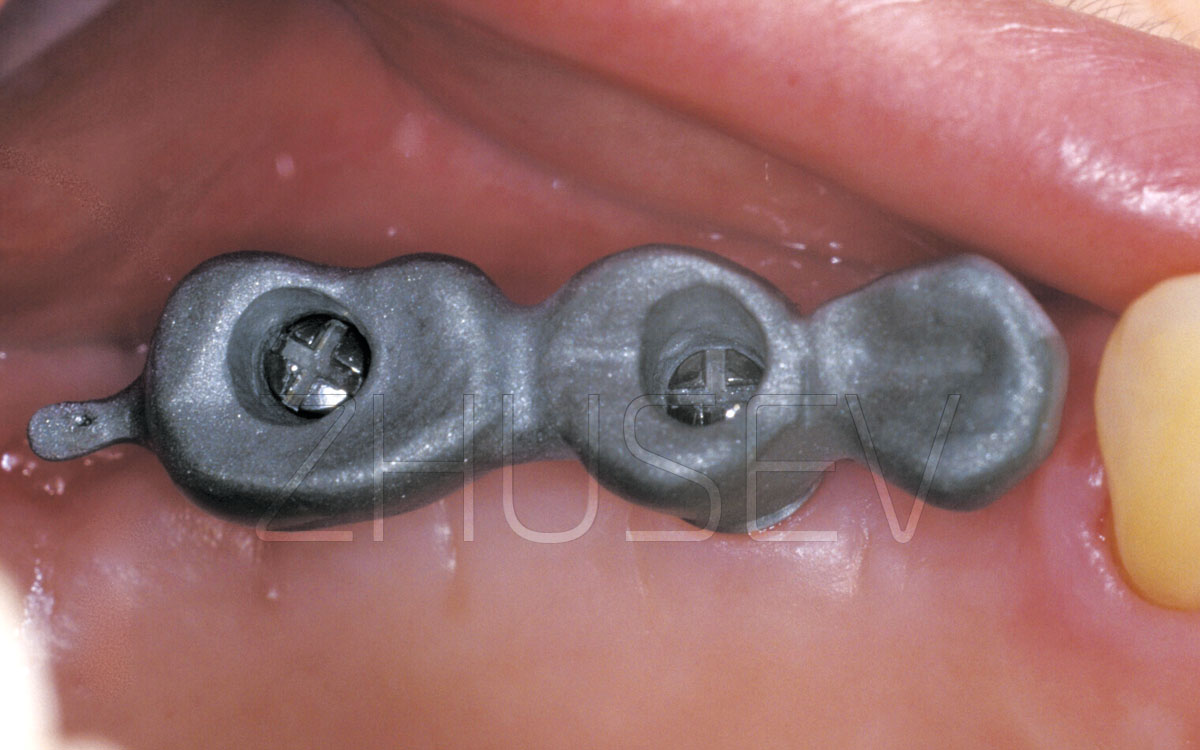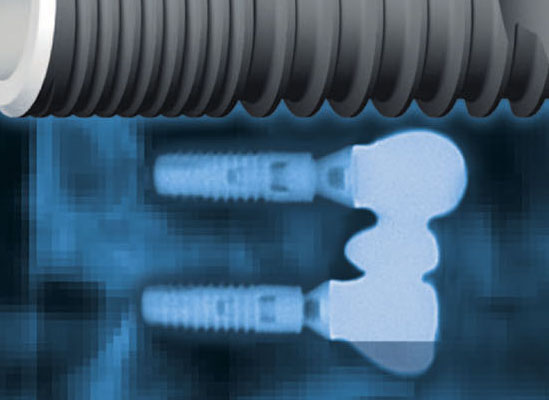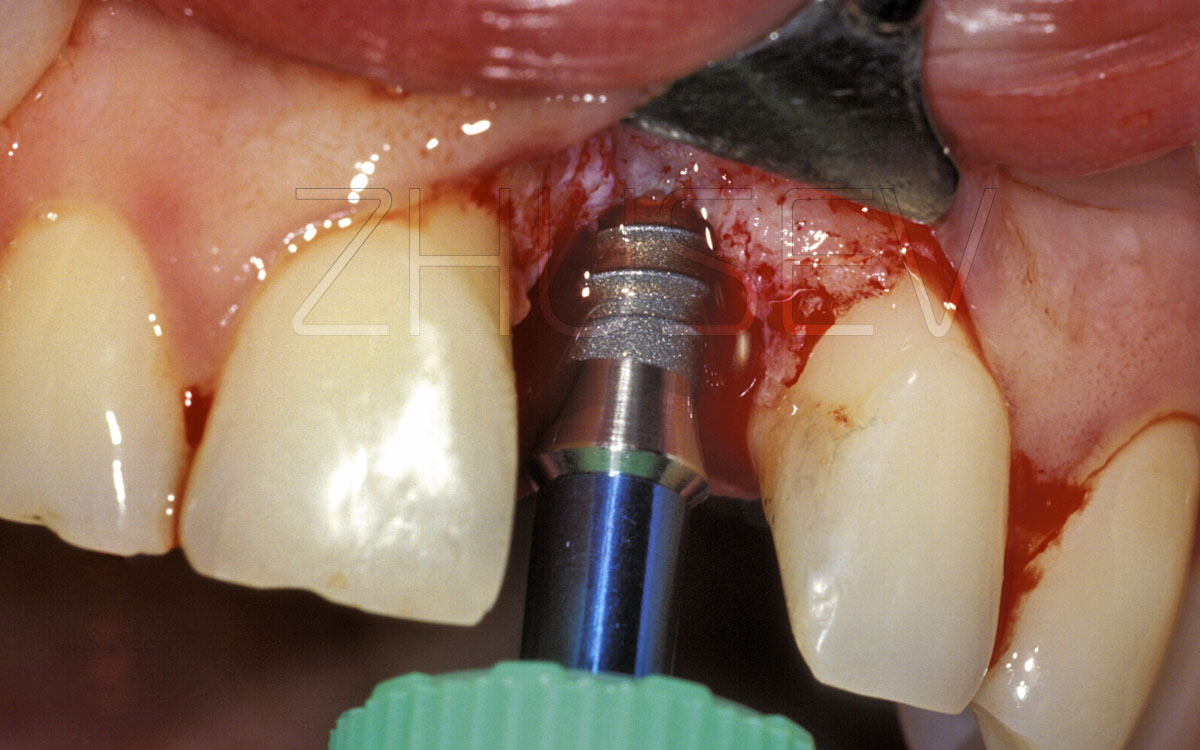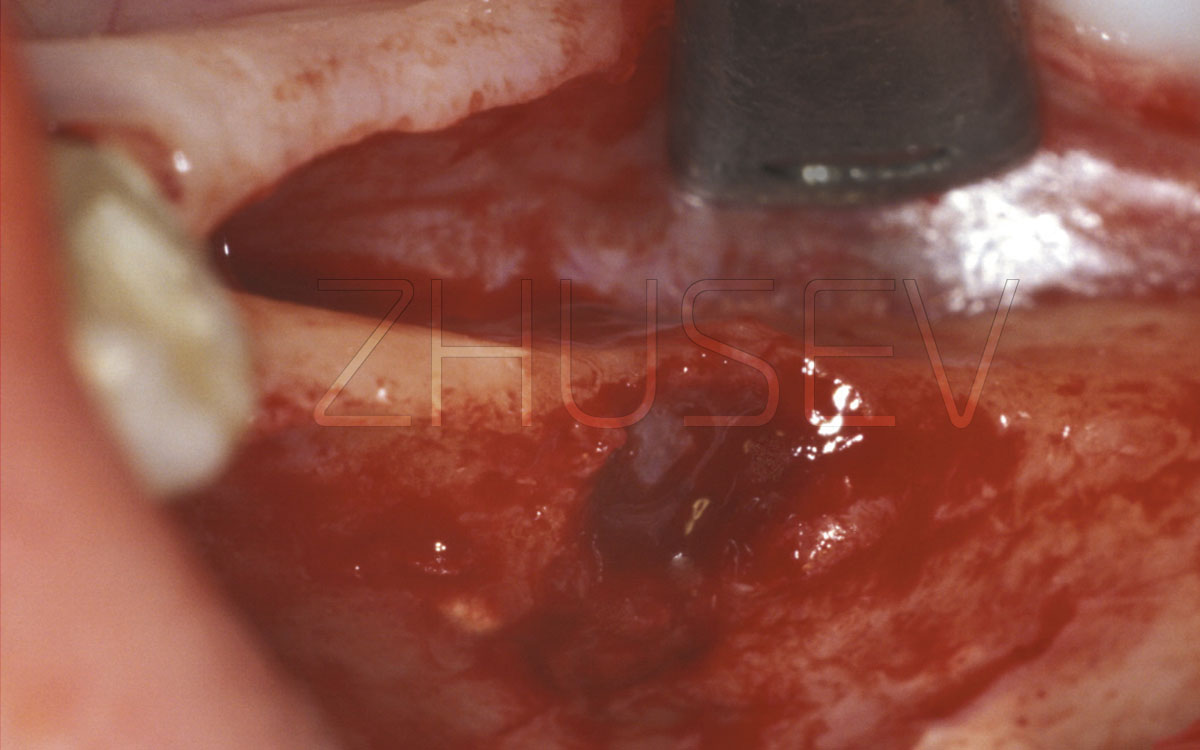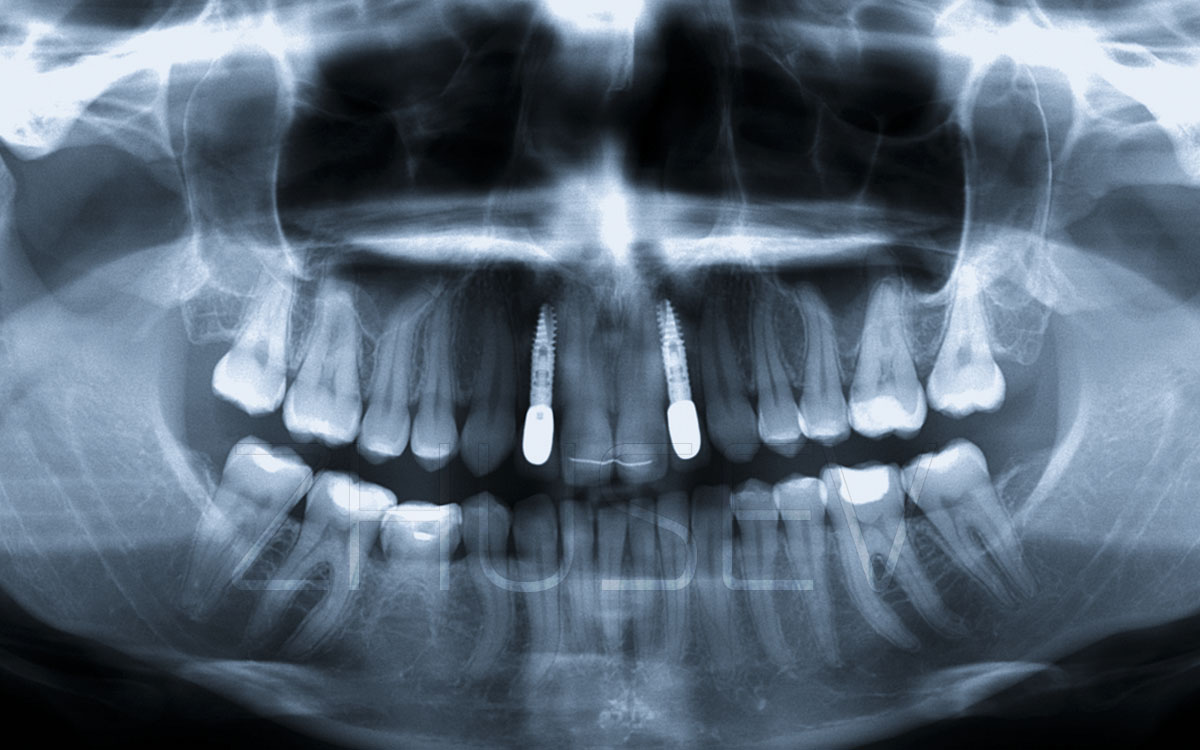4.3
Problems on the day of surgery
Problems on the day of surgery Problems on the day of surgery Problems on the day of surgery Problems on the day of surgery Problems on the day of surgery Problems on the day of surgery Problems on the day of surgery
“Incidental findings”. Sometimes at the very beginning of the surgery, you can come across “unexpected” things, such as a fragment of a tooth root, a cyst or even a fragment of an endodontal instrument. If the diameter of these objects is smaller than the diameter of the implant and coincides with its axis, you just drill them out while preparing the implant site. If the dimensions of such “findings” exceed the dimensions of the implant you install or if they radically change the plan of the surgery, you must inform the patient, remove the obstruction, replenish bone loss and return to the operation (implantation) in 4-6 months. Of course, all these things must be represented in the patient’s consent form.
4.3-1A
It’s difficult to believe that there is a “forgotten” root of the tooth under this mucosa.
4.3-1B
Even after lifting mucoperiosteal flaps, it is difficult to identify the topography of this root (it is situated along the alveolar bone).
4.3-1C
Only after removing the root you can identify the real size of the defect and choose the tactics.
4.3-2A
Here you can clearly see a fragment of the root of tooth #15. The patient insisted on implantation, because he was absolutely sure that the tooth had been completely removed and nothing bothered him.
4.3-2B
The mucoperiosteal flaps are lifted. You can distinctly see the fragment of the root sealed firmly by bone tissue.
4.3-2C
The view of the bone defect after the extraction of the root. The extracted fragment of the root of tooth 15.
4.3-2D
The bone defect is completely filled with the CollapAn material, and mucoperiosteal flaps are returned to their place.
4.3-2E
The view of the same area 4 months later. Some fragments of the osteoplastic material have not been completely replaced by bone tissue, but this is immaterial and doesn’t affect further implant integration.
4.3-2F
The implants are installed. The fragments of the osteoplastic material that have not been replaced by bone tissue are to be carefully washed off with saline solution. They needn’t be removed specially (with the help of excavators or curettes). Usually they are completely replaced by the time of implant integration.
4.3-3A
After lifting mucoperiosteal flaps, there was discovered a cyst, which partially lysed the vestibular wall. After its careful removal, it was decided to restore the lost bone together with immediate implant installation.
To fill in the defect, it was decided to use the CollapAn material, which was in situ hydrated with sterile saline solution and mixed with whole blood from the surgical site.
4.3-3B
The bone defect is completely filled with the osteoplastic material. Please mind that at first you are to fill in the defect and only then insert the implant, not vice versa!
4.3-3C
During implant insertion, a small amount of the material squeezes out through the vestibular perforation. Then it is desirable to press it down with a wide raspatory and to continue screwing the implant.
4.3-3D
Remember to apply the osteoplastic material in plenty.
